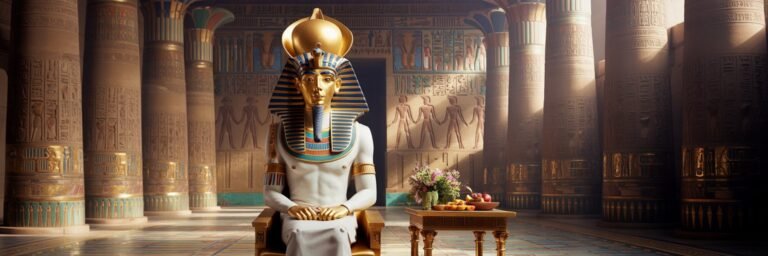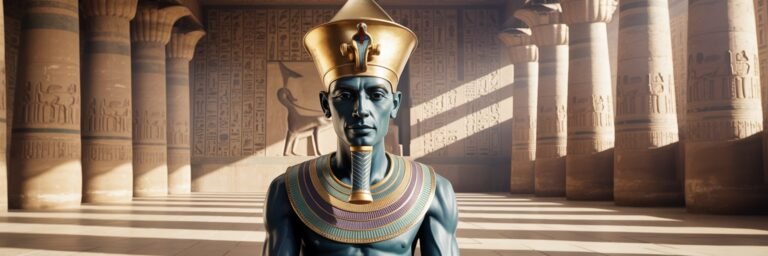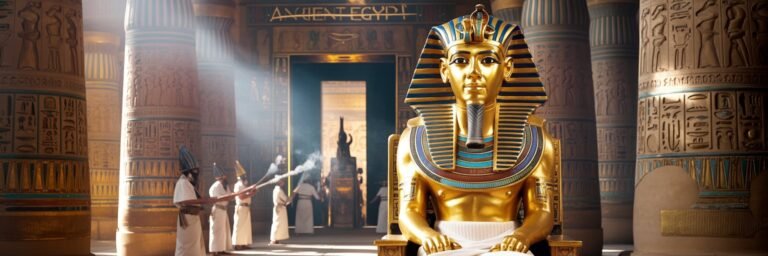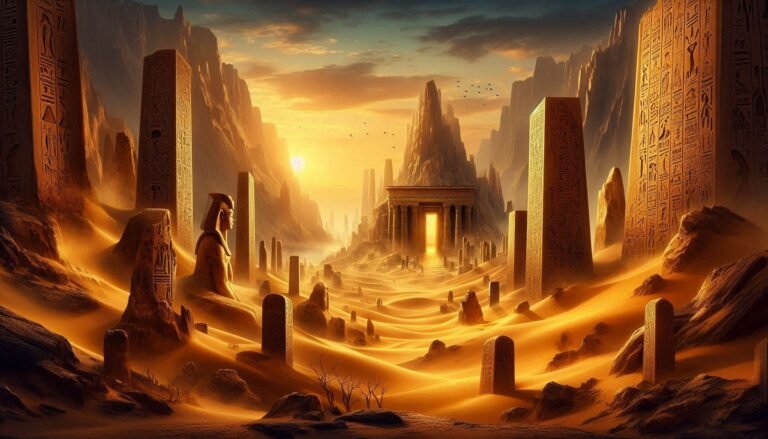INTRODUCTION
Ancient Egypt, a civilization that thrived along the fertile valleys of the mighty Nile River, has left an indelible mark on the contours of world history. Her majestic pyramids, her sophisticated hieroglyphs, her enigmatic sphinxes and obelisks, and her influential pantheon of gods and goddesses carry enduring whispers of a glorious past that has profoundly shaped human civilization. The purpose of this long-form article is to delve into the myriad ways in which this remarkable legacy has played an instrumental role in crafting the world as we know it today.
HISTORICAL BACKGROUND
The civilization of Ancient Egypt spanned over millennia, roughly from 3100 BCE until the end of the Ptolemaic Dynasty around 30 BCE, ending with the rule of Cleopatra VII. During this time, the civilization was divided into the Old, Middle, and New Kingdom periods, interspersed with Intermediate periods of instability.
Egypt is considered one of the world’s earliest states, having developed a centralized political system under the Pharaohs, who were revered as gods incarnate on earth. They built grand pharaonic structures, including the Great Pyramid of Giza and the temples of Luxor and Karnak, manifesting an advanced understanding of mathematics, architecture, and engineering.
The society was structured hierarchically with priests, administrators, artisans, and farmers forming the backbone of the thriving Egyptian community. Their reliance on the annual inundations of the Nile the birthplace of systematized agriculture, and their development of an elaborate system of hieroglyphic writing showcases their remarkable innovative prowess.
THEORIES AND INTERPRETATIONS
The traditional interpretation of Ancient Egyptian civilization credits the Nile’s flooding patterns for providing an agricultural surplus, enabling the growth of urban centers and a sophisticated culture. This view, espoused by historian Herodotus, is held commonly even today.
However, alternative theories challenge this perspective. Environmental determinist perspectives highlight the crucial impact of Egypt’s unique geography in shaping its civilization. Professor Karl Butzer stresses the impact of environmental factors like the Nile, the desert, and the Mediterranean on Egyptian technologies, social structures, and spiritual beliefs.
Another critical interpretation revolves around the contact and exchange theory. Marina Gallinaro, an Italian archaeologist, posits that various cultures and societies profoundly influenced Ancient Egypt, such as the Asiatic and Nubian cultures. Thus, Egypt must not be viewed in isolation but rather in its broader historical and geographical context.
MYSTERIES AND CONTROVERSIES
The illustrious civilization of Ancient Egypt is shrouded in enigmatic mysteries that continue to tantalize historians and archaeologists. One such mystery revolves around the construction of the Pyramids, particularly the Great Pyramid of Giza. Although mainstream historical interpretations attribute these constructions to the labor of thousands of skilled workers over decades, alternative theories suggest the use of advanced technologies, including some kinds of machinery or even extraterrestrial intervention.
Another controversy pertains to the cause of the collapse of this ancient civilization, with theories ranging from foreign invasion, internal strife, socio-economic issues to environmental changes.
SYMBOLISM AND CULTURAL SIGNIFICANCE
The Ancient Egyptians believed in a mystical realm that merged the spiritual and the physical worlds. They revered a pantheon of deities, with gods like Ra, Isis, Osiris, and Anubis playing significant roles in their religious and everyday lives. Their complex system of pictorial writing, known as hieroglyphs, enriched their cultural sphere and significantly influenced subsequent alphabets, including the Greek and Latin.
Symbolism was a crucial aspect of their culture, with symbols like the Ankh representing life and prosperity and the Eye of Horus symbolizing protection. Such imageries continue to pervade modern pop culture and esoteric traditions.
MODERN INVESTIGATIONS
In recent decades, modern archaeological techniques and technologies have vastly enhanced our understanding of Ancient Egypt. Techniques like carbon dating, satellite imagery, and ground penetrating radar have shed light on pyramids’ construction methods, ancient cities’ layout, and even allowed for virtual reconstruction of ancient tombs.
Legends of hidden chambers within the Great Pyramid have been reignited by the recent discovery of a large void within it, detected using cosmic rays. Similarly, the use of DNA analysis on mummies is providing fascinating insights into the genealogy, diseases, and lifestyles of ancient Egyptians.
LEGACY AND CONCLUSION
Ancient Egypt’s legacy pervades various aspects of modern society, from architecture, art, and science, to our understanding of political governance and religion. The idea of a centralized state and the concept of divine kingship trace their roots back to the Pharaohs of Egypt. Pyramids, obelisks, and sphinxes have been replicated in various forms in modern architecture, while artistic motifs featuring lotus and papyrus, faience, and intricate jewelry inspire modern aesthetics.
No exploration into the annals of human history would be complete without acknowledging the extensive influences of Ancient Egypt. Its rich tapestry of innovation, resilience, spiritual and cultural profundity still resonates in our collective conscience, securing its place as a milestone in the history of civilizations. Understanding Ancient Egypt is not merely a dive into the past, but rather a journey that illuminates our present, and paves a path for the future.






